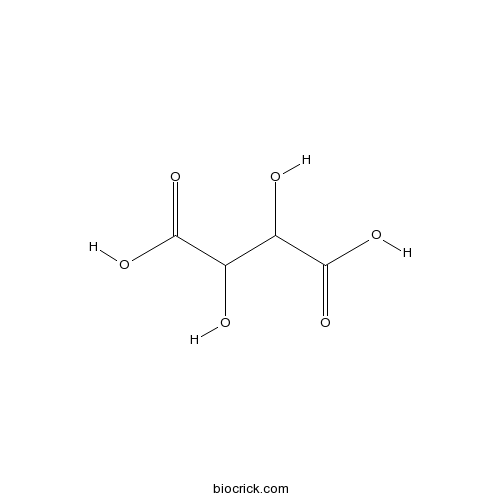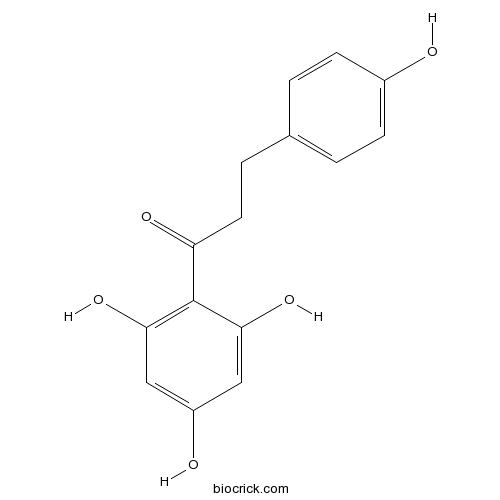Malus pumila
Malus pumila
1. The products in our compound library are selected from thousands of unique natural products; 2. It has the characteristics of diverse structure, diverse sources and wide coverage of activities; 3. Provide information on the activity of products from major journals, patents and research reports around the world, providing theoretical direction and research basis for further research and screening; 4. Free combination according to the type, source, target and disease of natural product; 5. The compound powder is placed in a covered tube and then discharged into a 10 x 10 cryostat; 6. Transport in ice pack or dry ice pack. Please store it at -20 °C as soon as possible after receiving the product, and use it as soon as possible after opening.
Natural products/compounds from Malus pumila
- Cat.No. Product Name CAS Number COA
-
BCN9052
DL-Tartaric acid133-37-9
Instructions

-
BCN6315
Procyanidin B229106-49-8
Instructions

-
BCN4128
Phloretin60-82-2
Instructions

-
BCN2699
Malic acid6915-15-7
Instructions

Evaluation of Nasonov Pheromone Dispensers for Pollinator Attraction in Apple, Blueberry, and Cherry.[Pubmed: 29688446]
Declines in the number of commercial honey bees (Apis mellifera L.) (Hymenoptera: Apidae) and some wild bee species around the world threaten fruit, nut, and vegetable production and have prompted interest in developing methods for gaining efficiencies in pollination services. One possible approach would be to deploy attractants within the target crop to increase the number of floral visits. In this study, we evaluate two new pollinator attractants, Polynate and SPLAT Bloom, for their ability to increase pollinator visitation and fruit set in apple (Malus pumila Mill.), highbush blueberry (Vaccinium sp. L.), and tart cherry (Prunus cerasus L.). Polynate is a plastic twin-tube dispenser loaded with a mixture of floral scent and Nasonov pheromone. SPLAT Bloom contains the same chemical formula as Polynate, but is applied as a 3 g wax dollop directly onto the tree or bush. The objectives of this study were to determine if Polynate and SPLAT Bloom increase the number of honey bee foragers and fruit set in apples, highbush blueberries, and tart cherries. We conducted replicated evaluations of 32 fields or orchards with and without putative attractants over three growing seasons. Both products failed to provide a measurable increase in pollinator visits or fruit set in these crops, indicating no return on investment for either product.
An automatic on-line 2,2-diphenyl-1-picrylhydrazyl-high performance liquid chromatography method for high-throughput screening of antioxidants from natural products.[Pubmed: 28939230]
Many natural products are rich in antioxidants which play an important role in preventing or postponing a variety of diseases, such as cardiovascular and inflammatory disease, diabetes as well as breast cancer. In this paper, an automatic on-line 2,2-diphenyl-1-picrylhydrazyl-high performance liquid chromatography (DPPH-HPLC) method was established for antioxidants screening with nine standards including organic acids (4-hydroxyphenylacetic acid, p-coumaric acid, ferulic acid, and benzoic acid), alkaloids (coptisine and berberine), and flavonoids (quercitrin, astragalin, and quercetin). The optimal concentration of DPPH was determined, and six potential antioxidants including 4-hydroxyphenylacetic acid, p-coumaric acid, ferulic acid, quercitrin, astragalin, and quercetin, and three non-antioxidants including benzoic acid, coptisine, and berberine, were successfully screened out and validated by conventional DPPH radical scavenging activity assay. The established method has been applied to the crude samples of Saccharum officinarum rinds, Coptis chinensis powders, and Malus pumila leaves, consecutively. Two potential antioxidant compounds from Saccharum officinarum rinds and five potential antioxidant compounds from Malus pumila eaves were rapidly screened out. Then these seven potential antioxidants were purified and identified as p-coumaric acid, ferulic acid, phloridzin, isoquercitrin, quercetin-3-xyloside, quercetin-3-arabinoside, and quercetin-3-rhamnoside using countercurrent chromatography combined with mass spectrometry and their antioxidant activities were further evaluated by conventional DPPH radical scavenging assay. The activity result was in accordance with that of the established method. This established method is cheap and automatic, and could be used as an efficient tool for high-throughput antioxidant screening from various complex natural products.
Sensory specificity and speciation: a potential neuronal pathway for host fruit odour discrimination in Rhagoletis pomonella.[Pubmed: 28003447]
Behavioural changes in habitat or mate choice can trigger population divergence, leading to speciation. However, little is known about the neurological bases for such changes. Rhagoletis pomonella (Diptera: Tephritidae) is a model for ecological speciation via host plant shifts. Within the past 180 years, Rhagoletis flies infesting hawthorn (Crataegus spp.) shifted to attack domesticated apple (Malus pumila). The two populations differ in their olfactory preferences for apple versus hawthorn fruit. Here, we looked for patterns of sensory organization that may have contributed to this shift by characterizing the morphology, specificity and distribution of olfactory sensory neurons (OSNs) on the antennae of Rhagoletis responding to host fruit and non-host volatiles. Of 28 OSN classes identified, two colocalized OSN pairs were found that specifically responded to the major behavioural attractant and antagonist volatiles for each fly population. A reversal in the response of these OSNs to fruit volatiles, either through a switch in receptor expression between these paired neurons or changes in neuronal projections in the brain, could therefore account for the behavioural difference between apple and hawthorn flies. The finding supports the hypothesis that relatively minor changes in olfactory sensory pathways may contribute to rapid host shifting and divergence in Rhagoletis.
Biological relevance of volatile organic compounds emitted during the pathogenic interactions between apple plants and Erwinia amylovora.[Pubmed: 27862864]
Volatile organic compounds emitted during the infection of apple (Malus pumila var. domestica) plants by Erwinia amylovora or Pseudomonas syringae pv. syringae were studied by gas chromatography-mass spectrometry and proton transfer reaction-mass spectrometry, and used to treat uninfected plants. Infected plants showed a disease-specific emission of volatile organic compounds, including several bio-active compounds, such as hexenal isomers and 2,3-butanediol. Leaf growth promotion and a higher resistance to the pathogen, expressed as a lower bacterial growth and migration in plant tissues, were detected in plants exposed to volatile compounds from E. amylovora-infected plants. Transcriptional analysis revealed the activation of salicylic acid synthesis and signal transduction in healthy plants exposed to volatiles produced by E. amylovora-infected neighbour plants. In contrast, in the same plants, salicylic acid-dependent responses were repressed after infection, whereas oxylipin metabolism was activated. These results clarify some metabolic and ecological aspects of the pathogenic adaptation of E. amylovora to its host.
Annurca (Malus pumila Miller cv. Annurca) apple as a functional food for the contribution to a healthy balance of plasma cholesterol levels: results of a randomized clinical trial.[Pubmed: 27571713]
Recent human studies have evaluated the effect of daily apple consumption on plasma cholesterol level, which is recognized as an important risk factor for cardiovascular disease (CVD). Nevertheless, slightly significant effects have been generally registered although consuming more than two apples a day for several weeks.


